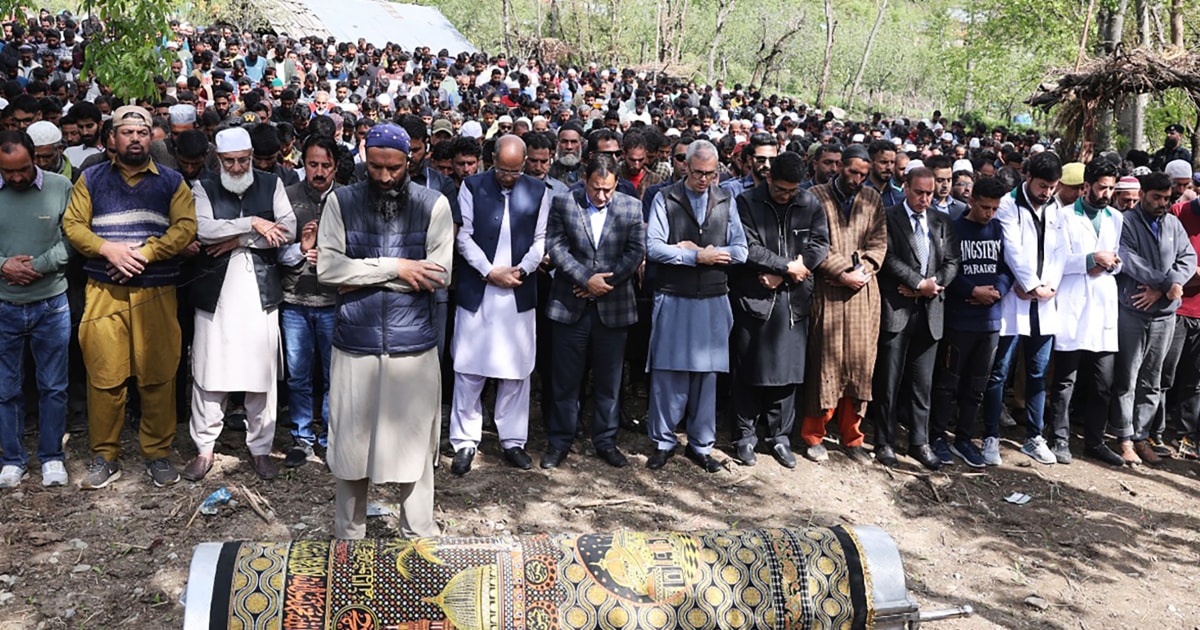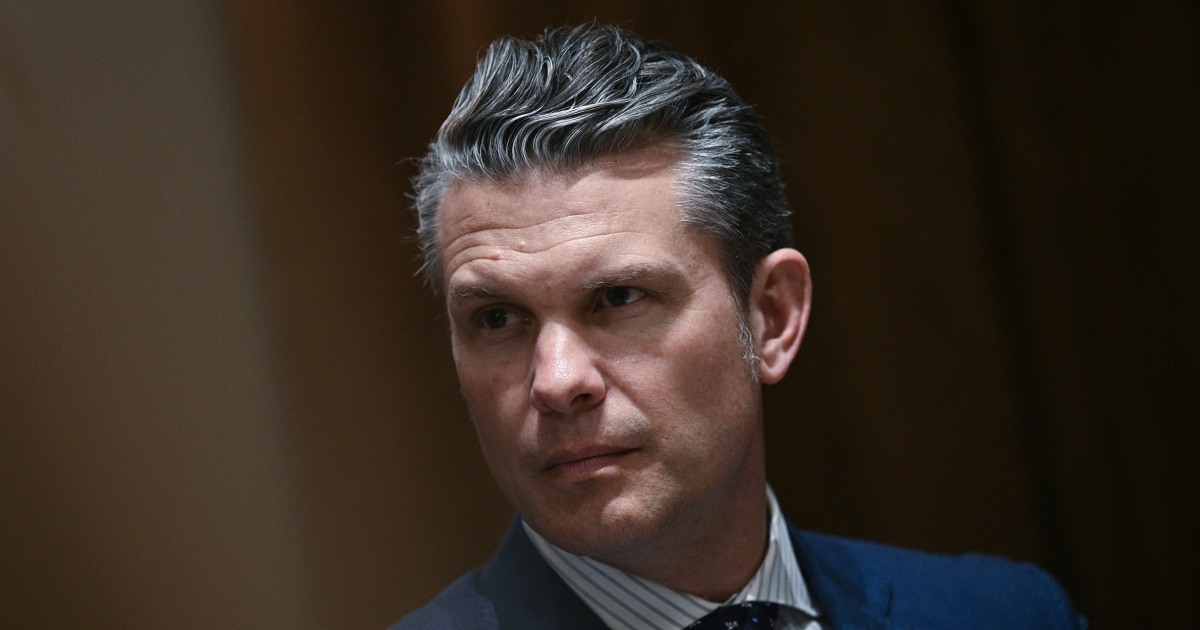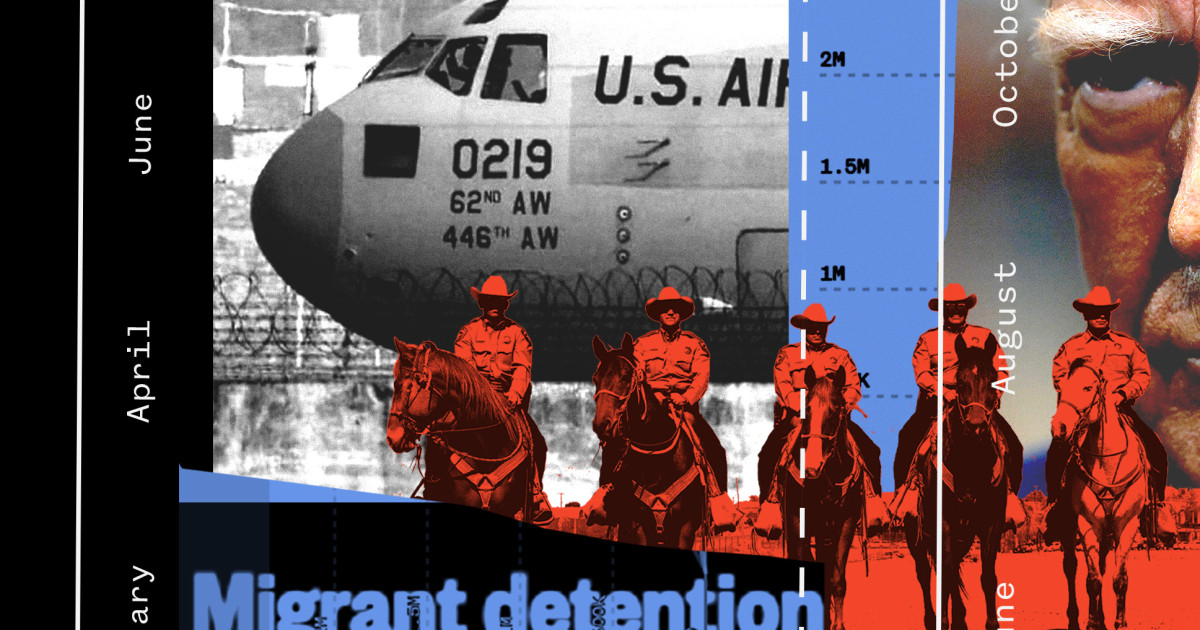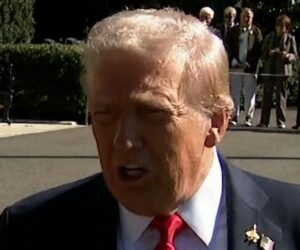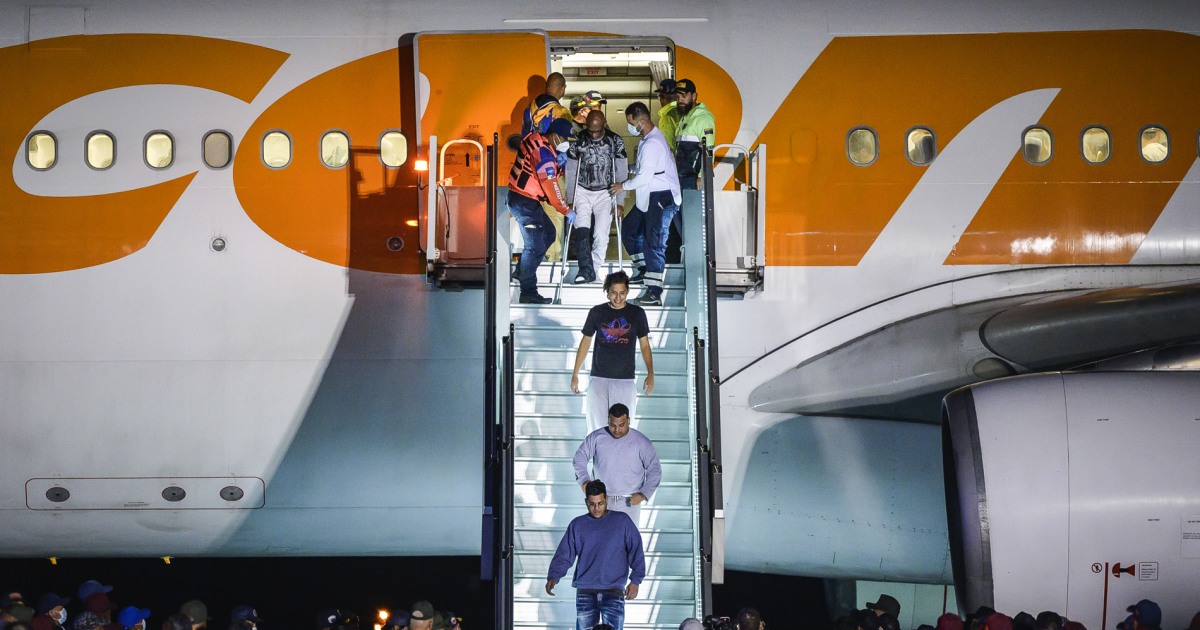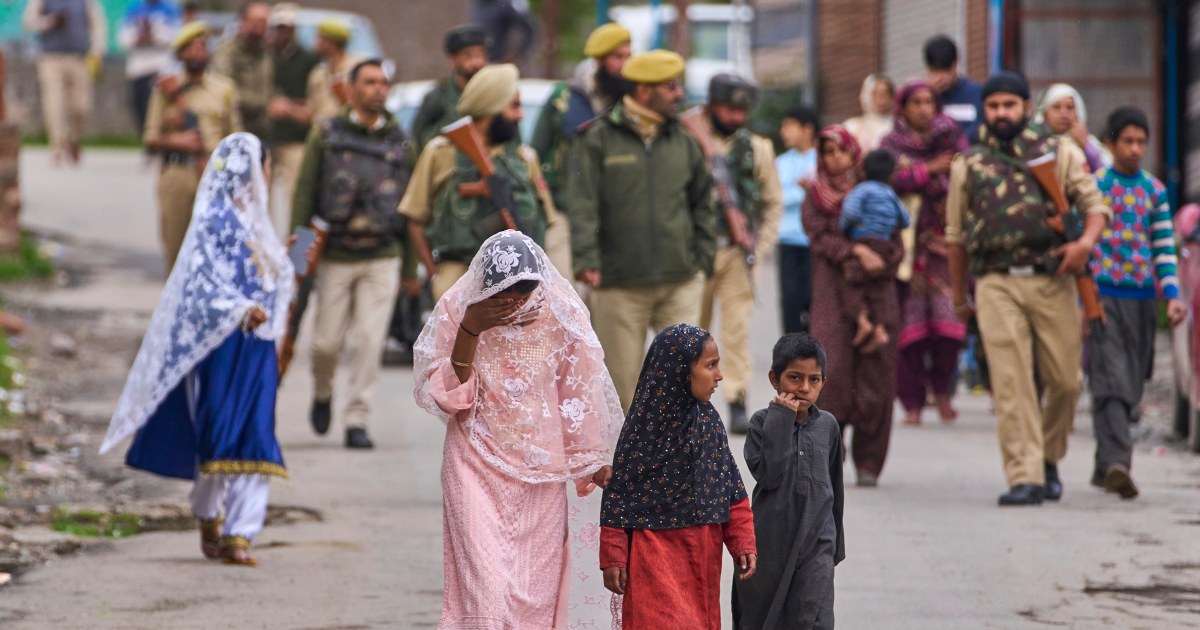SRINAGAR, India — After trekking through streams and forests in Indian-administered Kashmir, Sheetal Kalthia and her vacationing family had just arrived in a remote, picturesque meadow when they heard gunshots.
Kalthia, who was with her husband and their two children, said they “sensed that something was wrong and ran to hide behind the tent, but they suddenly were standing in front of us.”
Militants armed with rifles had descended on tourists in the meadow from the surrounding woods, identifying non-Muslims and then separating the men from the women and children.
One of the militants “shot six to seven men in front of me,” Kalthia said, before shooting her husband, Shailesh.
“My husband died in my lap, and I couldn’t do anything about it,” she told reporters Thursday at his funeral in their hometown of Surat in the Indian state of Gujarat.
Twenty-six people were killed in the Tuesday attack, which took place in one of Kashmir’s top tourist destinations, the Baisaran Valley, whose lush green meadows, dense pine forests and snowcapped mountains have led it to be called India’s “mini Switzerland.”
It was the deadliest attack on Indian civilians in almost two decades, and took place while Vice President JD Vance and his family were visiting another part of India. All but one of those killed were Indian nationals; the other was from Nepal.
The attack near the town of Pahalgam in Kashmir, a disputed Himalayan region that is the only Muslim-majority part of India, has devastated the local tourism industry on which many rely for their livelihood. It also undermined Indian Prime Minister Narendra Modi’s insistence that the security situation had stabilized after a decadeslong separatist insurgency.
New Delhi has responded with fury, immediately downgrading ties with neighboring Pakistan, which it has long accused of supporting cross-border terrorism. Indian officials say the gunmen had ties to militant groups based in Pakistan, which denies any involvement.
Relations between the two nuclear powers, which both rule parts of Kashmir and have fought two wars over the region, are now at their lowest point in years after tit-for-tat treaty suspensions and the expulsion of diplomats and civilians. On Saturday, Indian and Pakistani troops exchanged gunfire for the second day in a row along the Line of Control that divides the two parts of Kashmir.
Modi, a Hindu nationalist who has overseen a crackdown on dissent in Kashmir, vowed retribution for the attack. The family homes of several suspects have been demolished.
“I say to the whole world, India will identify, track and punish every terrorist and their backers,” he said Thursday.
President Donald Trump, who is close with Modi, said the Indian leader has his “full support.”
For Indians watching Modi’s speech, it was an echo of 2019 when a convoy of Indian security forces was blown up in Kashmir and he responded by launching aerial strikes on Pakistan.
Six years later, Indian nationalism is higher than ever, the Pakistan military’s grip on power has weakened, and the U.S. is no longer in Afghanistan, which analysts say historically deterred violence between India and Pakistan.
“That perhaps gives India a bit of a blank check to do whatever it pleases,” said Chietigj Bajpaee, a senior research fellow for South Asia at Chatham House, a London-based think tank.
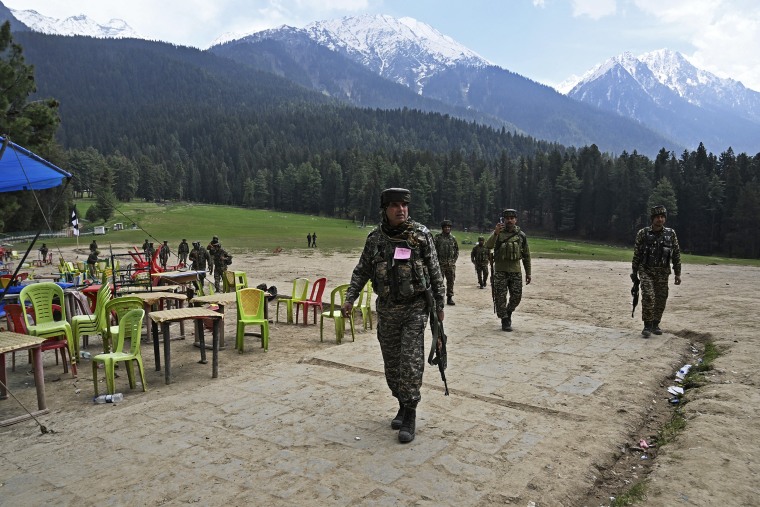
A region simmering with rage
Resentment between India and Pakistan dates to 1947, when Hindu-majority India gained independence from British colonial rule and Muslim-majority Pakistan was established as a separate state in a deadly partition in which hundreds of thousands of people were killed while migrating across the newly formed border.
The border lines were clearly defined and accepted except for the mountainous state of Jammu and Kashmir, which is among the most militarized places in the world. Both Pakistan and India lay full claim to it, but most of it is Indian-administered, while Pakistan controls a small chunk to the west.
Tensions have escalated since Modi revoked Kashmir’s semiautonomous status in 2019, effectively putting the region under direct control of the federal government in a move that was criticized by rights groups and raised fears that Kashmir’s ethnic and religious identity would be diluted by Hindu settlers.
Modi’s government said the move ended decades of armed rebellion in the region. Elections were held last year and hailed as a sign of normalcy.
“One indicator of normalcy that the government was always giving out was, look, there are so many tourists visiting,” said Lt. Gen. Deependra Singh Hooda, former head of the Indian Army’s Northern Command, who was stationed in Jammu and Kashmir from 2012 to 2016.
Praveen Donthi, a New Delhi-based senior analyst at the International Crisis Group, said the attack was a “colossal intelligence failure.”
Modi’s narrative of peace and stability “led to complacency, which is why they did not see this coming,” he said.
‘Bodies lying on the ground’
Pallavi Rao and her husband, Manjunath, had taken their son to Kashmir to celebrate his near-perfect score on his high school diploma exams. They had enjoyed a boat ride on the popular Dal lake in Kashmir’s main city of Srinagar before heading to Pahalgam about 30 miles away.
The militants found them in the meadow.
After her husband was shot in the head, Rao told reporters, she and her son asked the militants to kill them too. They refused, saying, “We won’t kill you. Go tell Prime Minister Modi.”
A local pony handler, Syed Adil Hussain Shah, was also killed while trying to save the tourists.
“He used to earn 300 rupees [$3.50] in a day, our only source of income in the family,” Ravisa Hussain Shah, his younger sister, told NBC News in an interview at their home in the village of Hapatnur.
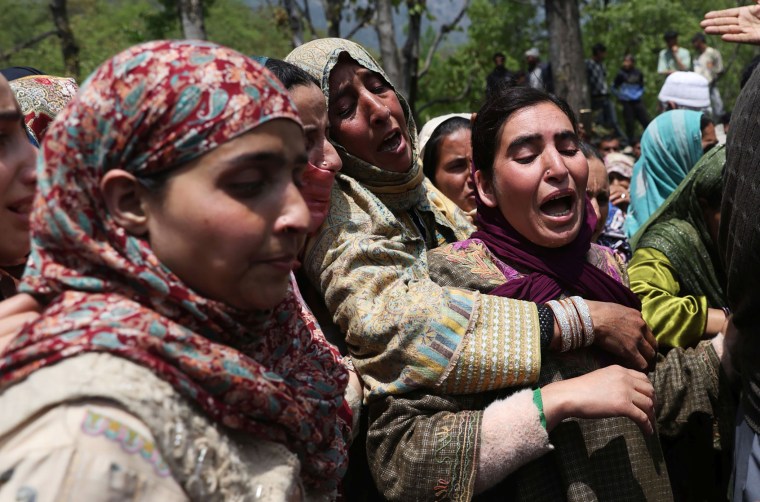
Among the first to reach the scene was Sajad Ahmad Bhat, 31, a shawl seller and tour guide.
“I saw bodies lying on the ground,” he said.
Bhat carried one of the victims almost 2.5 miles to safety, video of which went viral online.
“I don’t know who the boy was. But he was crying and seeking help. His hands and sweater were soaked in blood,” he said.
Since the attack, India has suspended a 1960 water treaty with Pakistan and closed the only functional land border crossing. Pakistan, which said any disruption to its water supply would be considered an “act of war,” has closed its airspace to Indian airlines and halted all trade with its neighbor.
Analysts inside Pakistan say the government may use the situation to bring the Kashmir issue back into global discussions.
“Pakistan can say, look, this happens because of India’s human rights violations in Kashmir,” said Farhan Siddiqi, a professor of international relations at Quaid-i-Azam University in Islamabad.
On Wednesday, Kashmir observed a complete shutdown as locals and politicians marched through the streets denouncing the killings. Roads throughout Kashmir were deserted, with shops closed and no transport on the roads.
“We wanted to exhibit that Kashmiris are nonviolent and peaceful people, and any innocent killings shouldn’t take place on our soil,” said Javed Ahmad Tenga, president of the Kashmir Chamber of Commerce and Industry.
The United Nations has urged India and Pakistan to “exercise maximum restraint” and called for “meaningful, mutual engagement.” But Donthi and others say strong Indian military action against Pakistan is likely.
“Anything less than the airstrikes in 2019 will not do. The public is seeking something much bigger,” Donthi said. “After riding the tiger of hypernationalism, the government has backed itself into a corner. This is their litmus test and they have to come out with flying colors.”
Junaid Kathju reported from Srinagar, India, and Mithil Aggarwal reported from Hong Kong.

